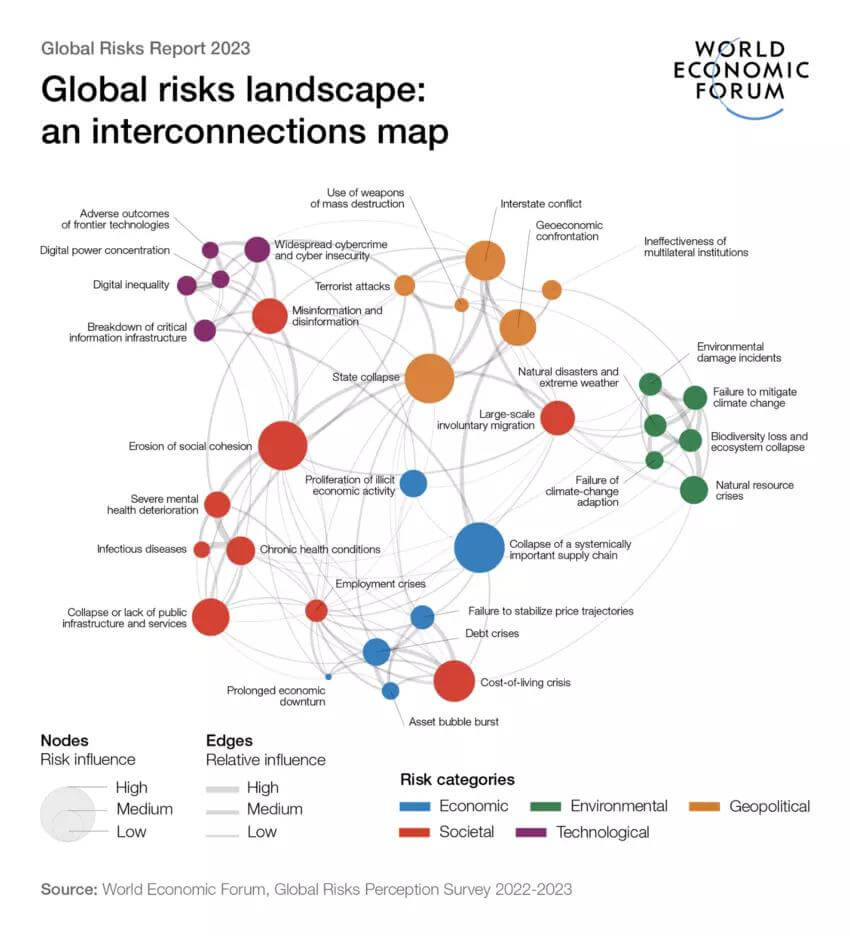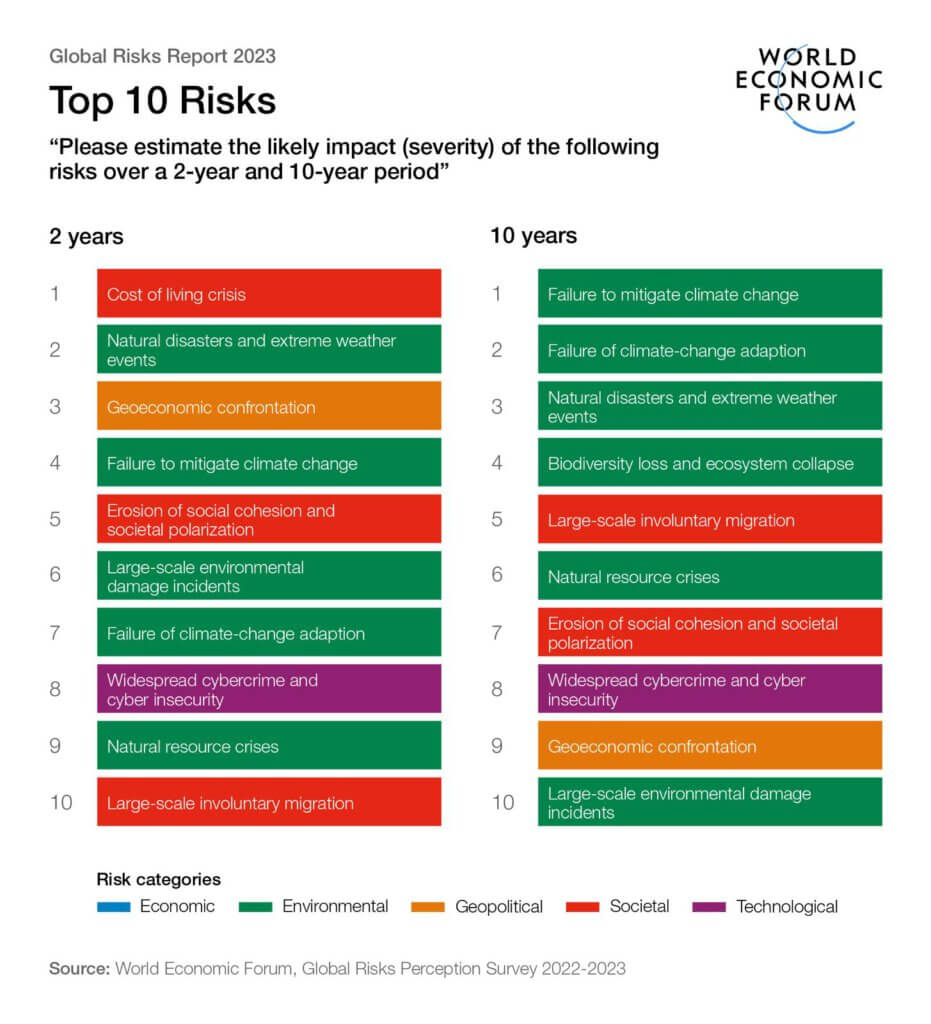
The World Economic Forum WEF publishes its latest risk report. But the ‘end of the world’ is also speckled by bright spots.
A few days before the start of the latest edition of the World Economic Forum WEF in Davos, the organization has published its annual global risk report.
This time, the results – which are based on surveys of 1,200 of the world’s top decision-makers and risk experts – really gets under the skin in some cases.
More often extreme events
In the short term, crises over the cost of living will dominate the picture, the WEF announced Wednesday. That should last for about two years, it added.
But in the long term, i.e. over a 10-year period, natural disasters, extreme events and geopolitical conflicts will continue to dominate the world.
This is in line with the assessments of star economist Hans-Werner Sinn, who also spoke of an accumulation of so-called “black swans”, i.e. rare but not impossible events, as is reported by muula.ch.
Trade wars and unrest
In its report, which was prepared together with Marsh McLennan, a consulting firm specializing in risk analysis, and Zurich Insurance, the WEF sees “old risks” coming back.
The disaster experts include inflation, rising costs of living, trade wars, capital outflows, social unrest and geopolitical conflicts.
De-globalization underway
And all of this would be further compounded by unsustainable debt levels, low economic growth and outright de-globalization. But climate change should not be forgotten as a threat, the survey further pointed out.


Long-term risks include the extinctions of entire animal and plant species, the scarcity of natural resources, and the growing gap between rich and poor.
The new economic era is likely to herald the first step backward in human development for decades, it postulated gloomily.
Permanent crises the norm
The focus, for example, on self-sufficiency of countries and increasing military spending are likely to further restrict the financial leeway of states. The report conveys the feeling that the world is slipping into a phase of permanent crises.
But before we sink into a doomsday mood, it is worth remembering that all of these risk experts are usually way off the mark in their analyses.
Just think of the insurance industry and its misjudgments about the disaster at the World Trade Center in New York, which no one had expected.
Pandemic over
This year, hardly anyone mentioned the coronavirus pandemic or infectious diseases in general as dangers, which shows that at least this mega-crisis seems to be over.
And here, too, the insurance industry’s risk managers were completely wrong: Initially, the industry had believed that a pandemic would have a negative impact mainly on life insurers because of the many fatalities.
In fact, however, it became a problem for property insurance, because supply chain problems and business interruptions suddenly resulted in high losses. So things usually turn out differently from what most think.
Totally off the mark
And with a view to the realization of all of those theoretical considerations, the Risk Report 2022 from last year should be brought out, in which the word “war” did not appear at all just a few days before Russia’s attack on Ukraine.
And the ‘experts’ also generally ranked interstate conflicts a distant 27th among the most important global risks.
12.01.2023/kut./ena.





